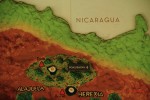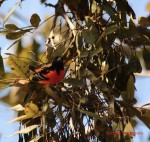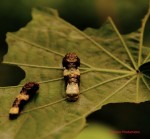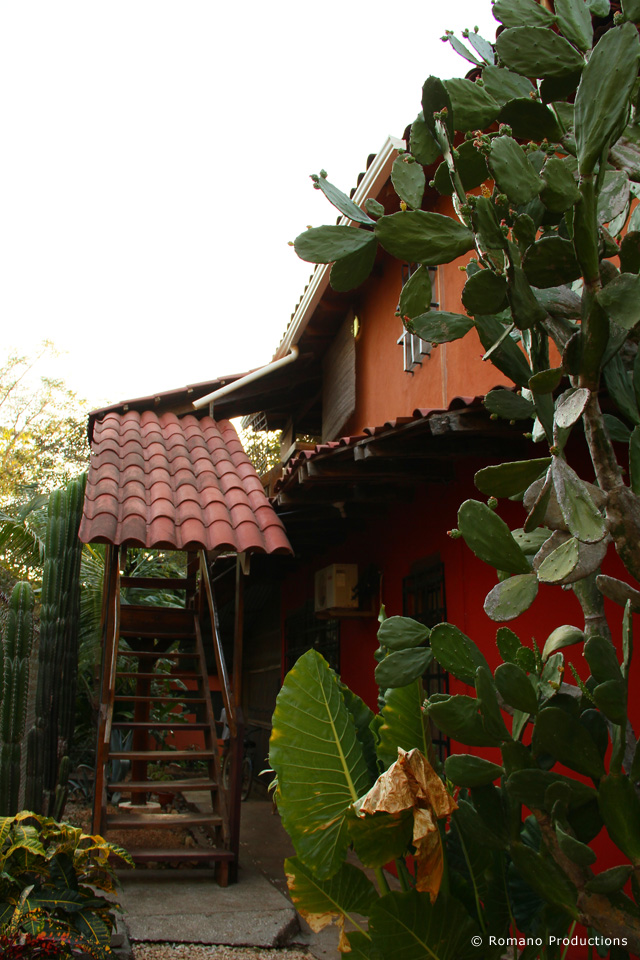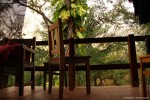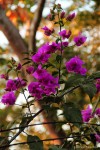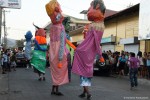
Traveling from the Pacific Ocean, through rain forest, dry forest and valleys, I found it truly amazing how one country the size of West Virginia has such a vast landscape and several climates.

With many different types of animal, bird and plant species, volcanos and the magnificent Caribbean Sea on its eastern border and the gorgeous Pacific Ocean on the West, it’s no wonder so many people from around the world visit Costa Rica’s paradise each and every year.

If you’re not familiar with Costa Rica, it’s the volcanos that created the landscape. Looking at the map, you’ll see them lined up, kind of in the middle of the country. The photo (right) is Irazu, one of six Costa Rican active Volcanos.

After a 5 hour bus ride from Tamarindo, I finally arrived in the capital city of San Jose.
I’ve always been in love with great coffee and today was a history lesson at the Britt Coffee Plantation in Heredia, Costa Rica just a short drive away…

Coffee originated in Ethiopia in S VIII-XV, then Saudi Arabia in SXVI, Italy in 1615, France in 1660, Martinique in 1723, Brazil 1727 and finally Costa Rica in 1750.

The next stop was The Museo Nacional Costa Rica in downtown San Jose. It’s amazing that so many people bypass these historic places but, I’m guessing it’s because San Jose isn’t on the list of great places to visit according to the internet and most travel agencies. And, I suppose for most people, it’s looked upon as a large congested hub city that most fly in or out of to get where they’re ultimately going. However, there are several museums within a short distance of each that provide plenty of history to foreigners. As the taxi pulled up to the museum, I noticed bullet holes on the walls and immediately began snapping photographs. This building use to be the military headquarters before its demise in 1948 during Costa Rica’s civil war. And, as I stood in front of this old building full of stories, in a country without a military, I wondered why America lives in such fear that their weapons will be taken away…

Anyway, as I walked from building to building learning about ancient Costa Rican artists and their talents way back when, I remembered the Volcanic rock on many of the Pacific beaches I’d visited the past six weeks. What an amazing art form, carving furniture out of Volcanic rock!

Check this out: Grinding stones or platforms (hereafter metates) and the mullers or hand stones used on them were made of porous volcanic rock. The grinding process and water produced a doughy mass usually of maize, but also of certain other seeds and tubers, like cassava. Grinding stone against stone produced recognizable patterns of friction wear. Both metates and mullers (manos) became common in the archaeological record approximately 500B.C., and their sculpted forms are recognizable as coming from different regions of Costa Rica. Check out the cool face under the table to the right! Cool huh?
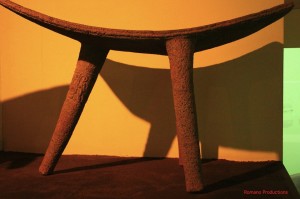
There were also special purpose ceremonial metates and in fact became the favored form for high-status sculpture during this period. These metates highlighted the importance of the control over agriculture and its products as a major power base for the leaders. I think the leaders back then were cool! Anyway… Such metates were destined for only occasional ceremonial use, and in fact some of them may have been utilized as altars for display or even seats for powerful leaders during these ceremonies!
In this period, the ceremonial metates of NW Costa Rica highlighted carving on the underside of the working grinding plaste.

Some of these very complex carvings show ritually costumed high-ranking shamans or chiefs with fancy headdresses, feathered capes, staffs, weapons and other intricate clothing of leather and cloth.
“Bling Bling”.

In Costa Rica, the oldest golden objects date from the first century after the time of Christ, and were made with techniques that originated in Panama and Colombia.

Colonial Costa Rica
The colonial period in Costa Rica was characterized by a relative situation of isolation and poverty that affected commerce and the acquisition of produce goods from other provinces. This situation is a reflection of the austerity of that period which contributed directly to forge Costa Rica’s way of being.
Stay tune for more of Tony’s World…





